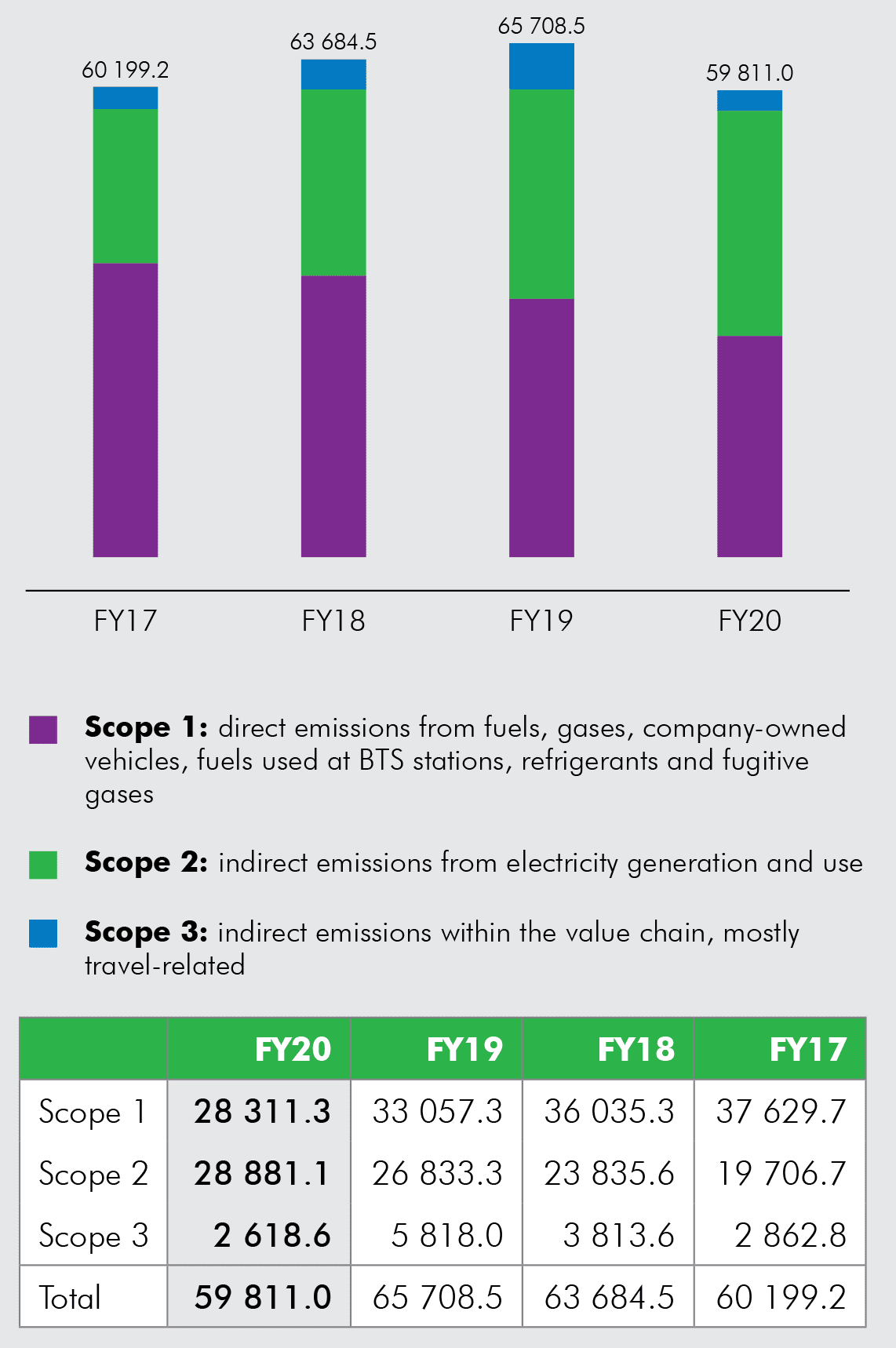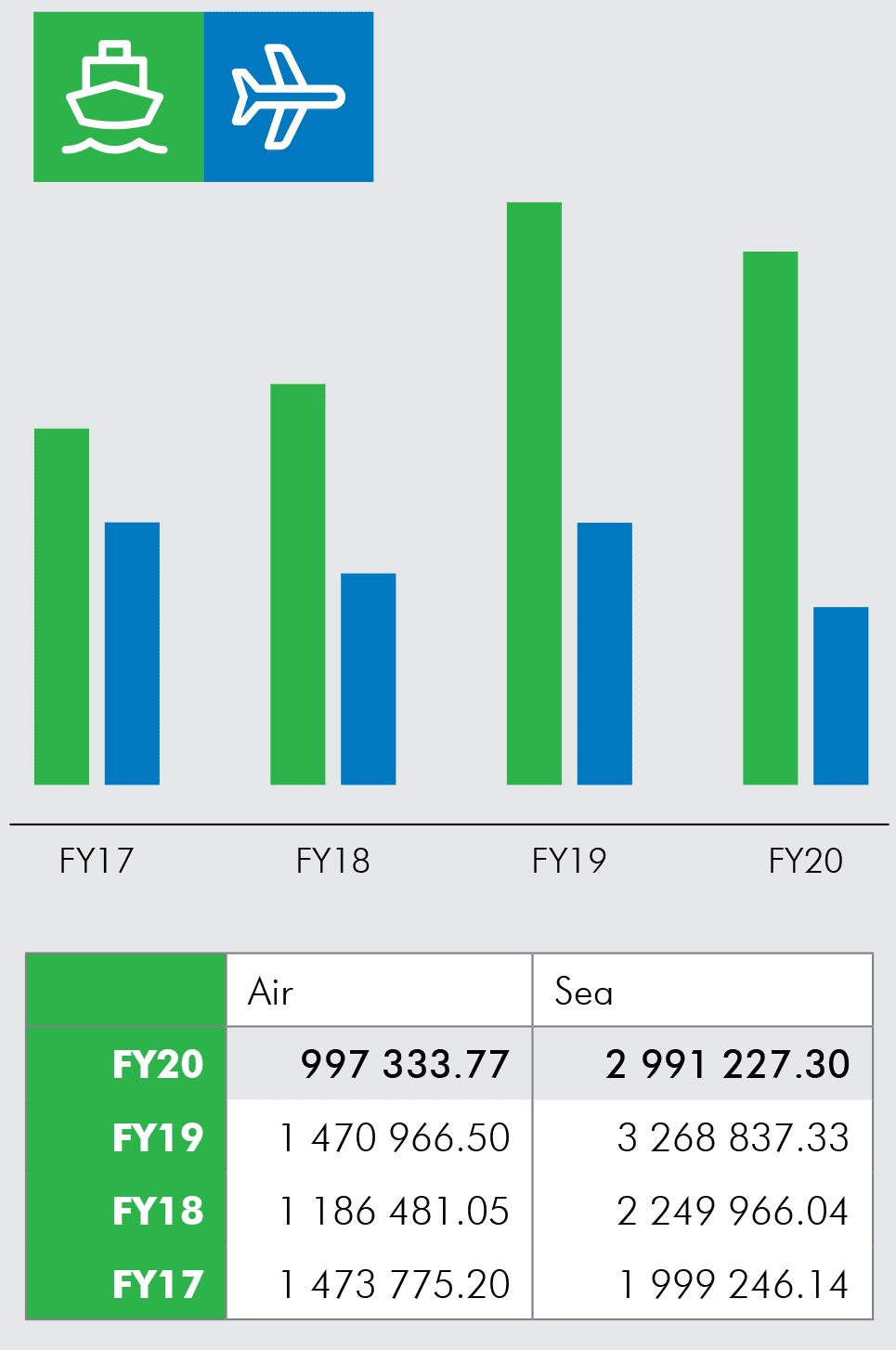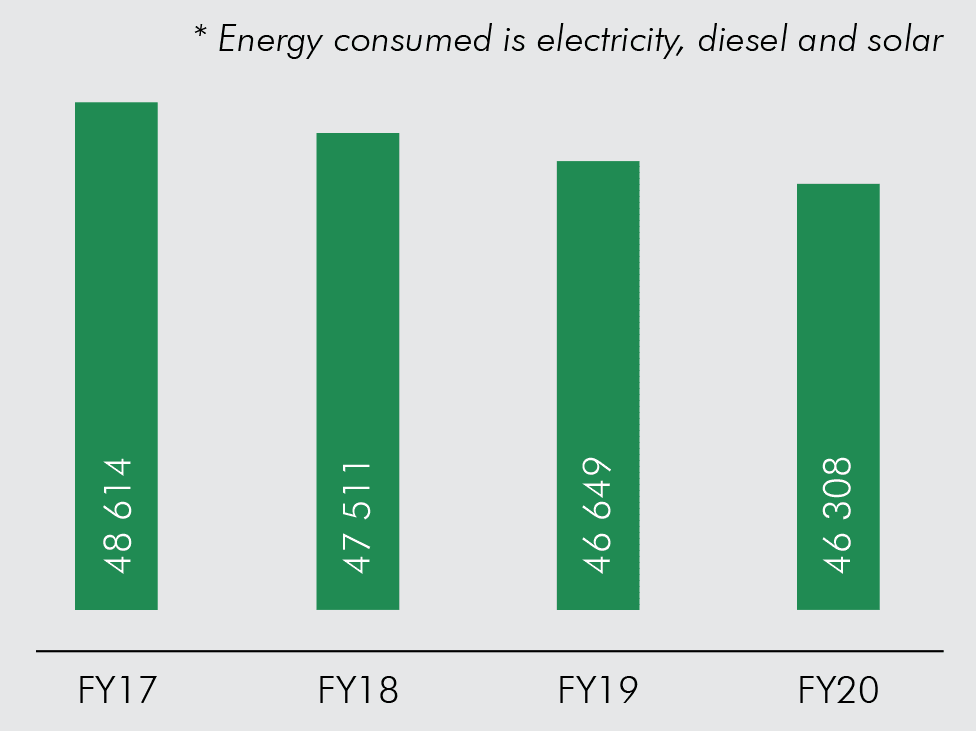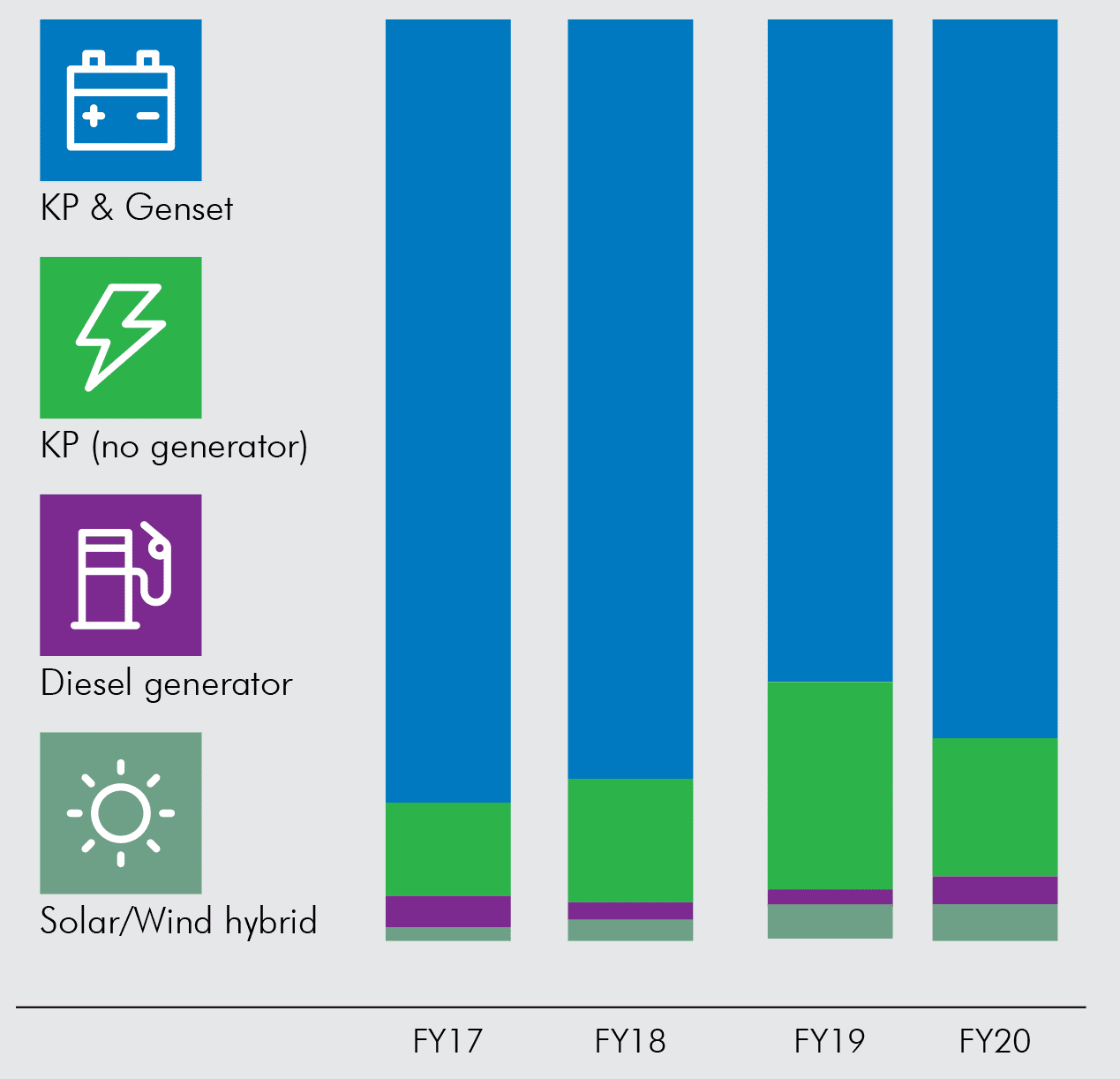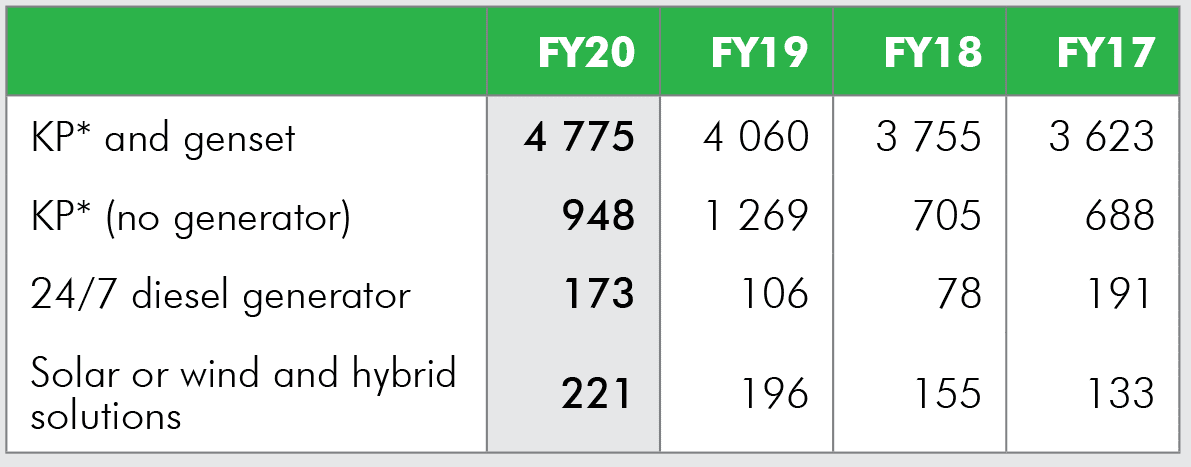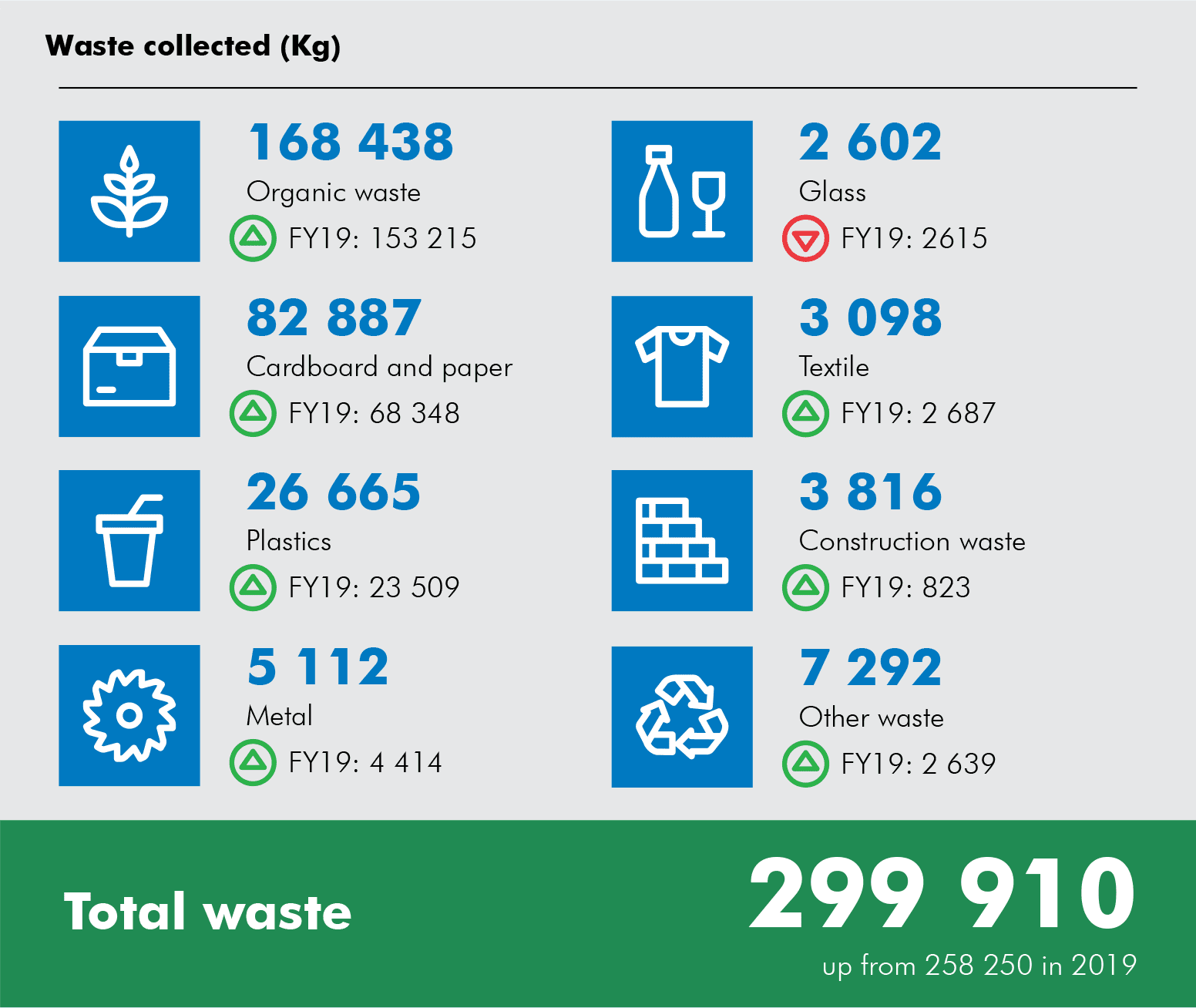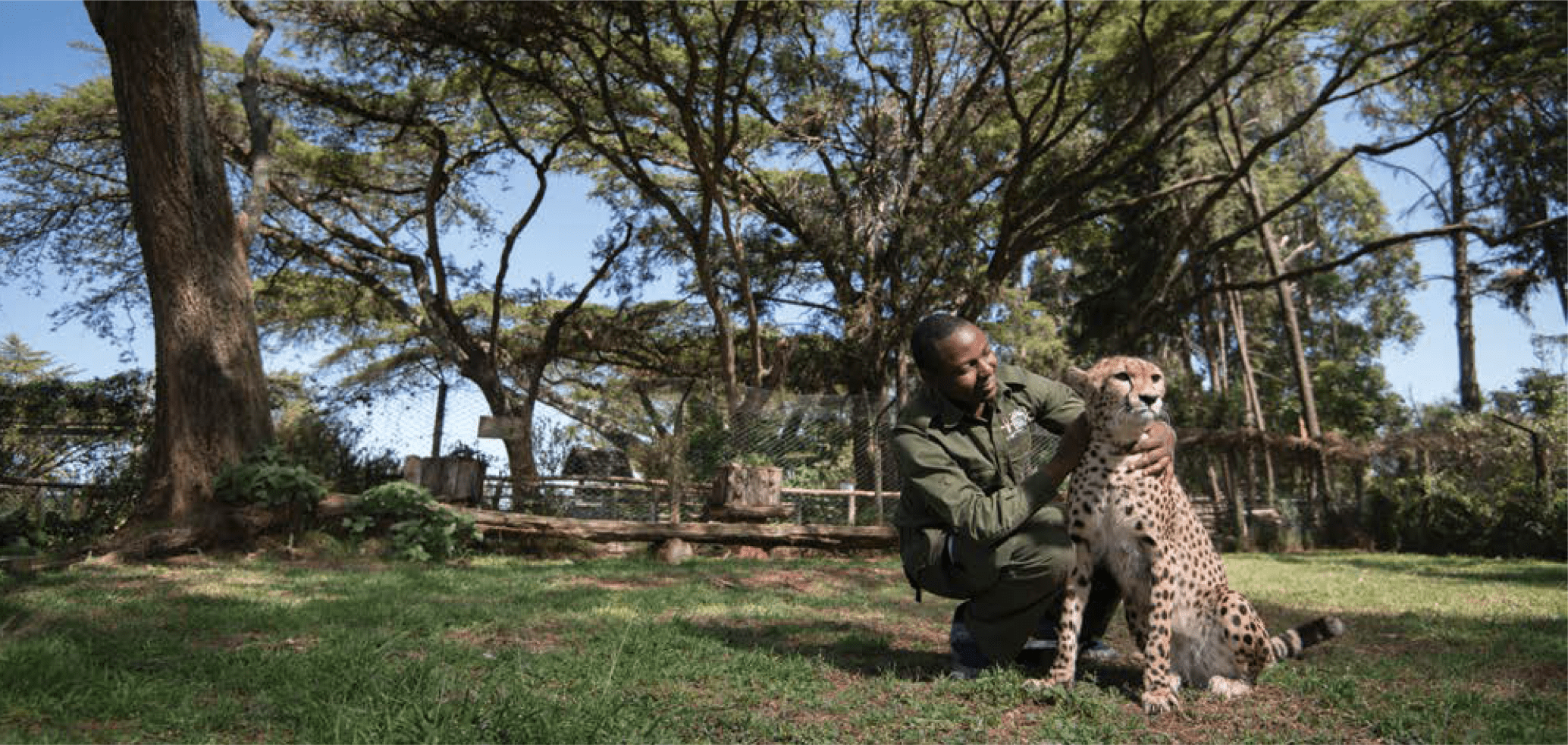Environmental stewardship




As part of our ongoing commitment to the SDGs, we continue to work towards improving energy and resource efficiency in our network and facilities to reduce carbon emissions and our consumption. We are committed to a plastic free Safaricom and continue to collect and recycle waste, including E-waste. We recognise that we are uniquely placed and continue to work with our partners to develop clean, efficient and affordable energy and water related technology solutions and payment platforms.
As an increasing number of business leaders and organisations are acknowledging, the future growth and resilience of successful companies will be determined by their ability to navigate the looming global shift to a low-carbon, clean-technology based economy. We continue to take our social and moral responsibility to manage our environmental impact seriously. We recognise that environmental considerations are not separate from our core business, but an integral part of our overall business sustainability and success. We remain committed to operating in an environmentally sound and sustainable way, and managing and reporting our environmental performance in an open and transparent manner.
Managing our emissions
We remain committed to becoming a net zero carbon-emitting company by 2050. As part of this commitment, we continue to monitor and report our carbon footprint.
As the graph alongside shows, we achieved 9% reduction in the overall footprint. The reduction was driven by a significant fall in scope 3 emissions, caused by COVID-19 and the associated reduction in travel. Diesel and refrigerant consumption also decreased and billing accuracy improved for electricity consumption. We remain committed to implementing Net Zero action plan that will bear long term and sustained reduction per our science based targets.
CO2e emissions (tCO2e)
![]() Managing emissions
Managing emissions
The reduction under Scope 1 and 2 emissions have been driven by:
Diesel
- We improved our fueling process by ensuring collaboration with all the stakeholders and coming up with routine fuel schedules
- Projects; installed deep cycle batteries, smart rectifiers with 96% efficiency, conversions of indoor sites to outdoor, connected some off-grid sites to grid power and trials on renewable powered energy sites
- Good relationship with KPLC to ensure quick power resolution
Refrigerants
- Improved accuracy in the reporting of the refilled gas
- Ensured timely repair of leaking pipes
Electricity
- There was an improvement in billing accuracy
Our net zero aspiration
During the year, we successfully registered our carbon reduction milestone targets with the Science-based Targets Initiative (SBTi). Our greenhouse gas emissions reduction targets were approved by the SBTi for being consistent with levels required to meet the goals of the Paris Agreement. Our Scope 1 and 2 targets are consistent with the reductions required to keep warming to below 2°C. Our Scope 3 target for the emissions from our value chain met the SBTi criteria for ambitious value chain goals, meaning that it is in line with current best practice.
We have calculated our carbon reduction milestone targets using the Organisation for Economic Co-operation and Development (OECD) pathway and Compound Annual Growth Rate (CAGR) interpolation method. The above graph summarises the levels of reduction required to achieve our ‘net zero’ target by 2050.
We have calculated that, based on existing technology, we can reduce emissions by 74 per cent of the baseline year. The balance will be compensated through our carbon offset programme.
Carbon offset reforestation project
Last year, we announced our ambition to grow indigenous trees as our primary carbon offset initiative. The initiative is a partnership between us, the Kenya Forest Service (KFS) and local community forest associations to grow 5 million trees over a period of 5 years in four different sites. Our original plan was to grow one million trees in South Marmanet over five years and plant 50 000 seedlings before the long rains this year. In response to our calculations of what we require to offset our carbon emissions, we have since expanded the target of the project to growing five million trees at four sites across the country over the period and to planting 500 000 trees during this year. We source our seedlings from the associations and they help us tend to the saplings and ensure the trees reach maturity.
The initiative is expected to offset around 26 per cent of our carbon emissions once the trees have grown to maturity. In time, additional benefits from the forestation project will include providing jobs and stimulating economic growth in the local community, generating income from sales of tree seedlings, eco-tourism and beekeeping.
Reducing emissions from our supply chain
A key priority and focus area for our supply chain management team has been to reduce our emissions and drive cost savings by freighting goods via the sea instead of the air. The carbon footprint and greenhouse gas emissions of ocean or sea freight (goods transported using container ships) is a fraction of that air freight (goods flown in the holds of cargo planes). Our procurement policy now states that air freight should only be used if there is no viable alternative option and we will continue to track and publish the reductions achieved through this switch.
Reduction in air and sea emissions (kg)
Energy and resource consumption
Energy and resource consumption
One of the ways in which we monitor and manage our environmental impact is through our energy (electricity and diesel) and resource (water) consumption targets. The reasons for the increase in water consumption include an increase in the number of staff, enhanced awareness on hand washing and more staff washing their hands due to COVID-19 (mainly in Q4).
Energy efficiency
The network continues to grow in size and sophistication every year and so making it more energy efficient and intelligent remains an ongoing priority. One way we manage this ambition is to measure our performance against energy consumption targets (reducing the amount of energy consumed at sites by deploying more energyefficient technologies and alternative energy solutions).
Cost of energy consumption by site (KSh per month)*
The sources are supplier monthly fuelling data and KPLC bills. Solar energy is only measured at some sites, as such we have extrapolated the solar data to the other sites. Energy mix influences the cost.
As the graph above shows, we have steadily reduced the cost of energy consumption by site. During the year, we reduced our cost of energy consumption by site by a further KSh 341 to KSh 46 308 per month. The main reason for this improvement is a decrease in generator running times, which has resulted in less diesel being consumed. This has been achieved by increasing in the number of sites with deep cycle batteries, continued indoor-to-outdoor site conversions, the installation of highly efficient rectifiers and inverter-based air-conditioning units, and through strict adherence to the fuelling process.
Energy efficiency initiatives
Energy sources
Our network uses a variety of energy sources, including national grid, diesel generator, deep cycle battery and renewable energy (solar) solutions. The mix of energy sources impacts our energy efficiency and energy consumption patterns. Our focus remains on phasing out the use of diesel generators wherever possible, either by ensuring that national grid energy (which is cheaper and cleaner) is available at a site or by employing alternative energy solutions. We continue to prioritise the use of national grid energy at our larger sites (which provide critical coverage) and renewable energy-based solutions at our smaller sites (which provide additional capacity).
We are committed to promoting alternative clean energy sources across the network. As indicated in the preceding tables, we have been deploying and repairing solar sites and focused on connecting sites to the national grid, but in areas where the grid is unstable, we provision generators to ensure network availability and power redundancies. We minimise generator running times by installing deep cycle batteries. During the year, we continued to expand the network into areas outside the national grid and that lack reliable renewable sources of power, which resulted in the number of sites running diesel generators 24/7 increasing from 106 to 173.
Network energy sources by site (% contribution to total energy)
Network energy sources by site (total at year end)
Sustainable waste management
In FY18, we launched our Integrated Waste Management programme (IWM) in partnership with Taka Taka Solutions, a local waste management company that separates our waste for recycling. Since then, more than 97 per cent of all waste collected from our main facilities has been reused, repurposed, or recycled.
During the year, we expanded the IWM programme to our shops in Nairobi and audited the waste management system to ensure that it meets our internal requirements and our ISO 14001 international standards.
Waste collected (Kg)
Managing electronic waste
* Cumulative tonnes since the inception of the project
Electronic-waste or e-waste (which consists of discarded electrical or electronic devices) is an ongoing and growing problem. It remains the fastest growing stream of waste. The latest e-waste monitor report states that e-waste quantities are rising three times faster than the global population and 13 per cent faster than the global GDP during the last five years. This sharp rise creates substantial environmental and health pressures and demonstrates the urgency to shift to a new circular economy. It is for this reason that Safaricom continues to expand its e-waste management programme. We collected another 215 tonnes of e-waste this year and participated in various awareness raising campaigns and initiatives. We also worked with the government and other stakeholders in the development of the draft national e-waste strategy. We hope the strategy will be adopted for implementation by the government soon. Our e-waste programme is aligned to the draft national strategy.
Marking the International E-waste Day
For the second year running, we worked with the Ministry of Environment and Forestry to mark International E-waste Day. The day is used to raise awareness of the negative impacts of e-waste and to encourage customers, consumers, and government institutions to recycle devices. This year, we brought together numerous e-waste stakeholders, including the Ministry of Environment, the Communications Authority, the National Environment Management Authority, the WEEE Centre, formal and Informal recyclers, universities, and other government institutions. Through the event, we reached over 5 000 people directly and the broader Kenyan society indirectly through media coverage. Activities on the day included collections from universities, government ministries and parastatals and internally within Safaricom. We collected over 50 tonnes of e-waste as a result of this campaign.
![]() Towards a Plastic-Free Safaricom
Towards a Plastic-Free Safaricom
We want to eliminate the use of single-use plastic at our facilities and minimise the plastic incorporated into our retail packaging. During the year, we removed 9 600 plastic tumblers in our reception areas and replaced these with glasses. We also engaged with our outside caterers (suppliers) to eliminate single use plastic bottles at our events and, if this is not possible, to collect the plastic used after the event. Over 200 000 single-use plastic items have been removed from across the business.
Our progress since FY17
![]() Looking ahead
Looking ahead
- We will focus on circularity and explore opportunities to use waste as a resource.
- We will register our carbon reduction initiatives with the Carbon Disclosure Project (CDP)
- We will track our emissions related to our value chains.
- We will continue our partnership with the KFS towards achieving our target of growing five million trees in five years.
- We will also implement our MOU with UN Environment on Air Quality Monitoring Pilot.

